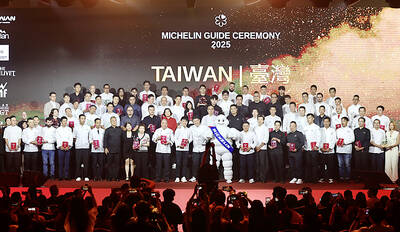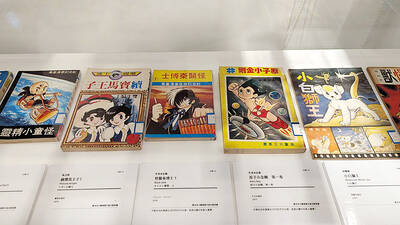A Taiwanese scientist at Academia Sinica has announced that her research team has identified the gene — CIPK15 (CBL-interacting protein kinase) — that explains how rice can germinate and grow under water.
“The CIPK15 gene has been found as the key that guarantees rice’s flood-tolerant qualities,” said Yu Shu-may (余淑美), a researcher at Academia Sinica’s Institute of Molecular Biology.
The gene is the reason why 80 percent of the world’s rice is traditionally planted in submerged fields, saving the need to kill weeds and use pesticides, Yu said.
She expressed the hope that the discovery behind rice’s growth can help human beings cultivate more crops that are resistant to floods, drought, salt and hot or cold temperatures at a time when extreme weather conditions resulting from global climate change have become common and often lead to diminished crop yields.
Yu’s study was selected as the cover story for the current issue of the journal Science Signaling.
Lee Kuo-wei (李國維), the first author of the paper and the prime contributor to the rice genomics study, said the team’s research found that rice is the only crop that can survive in flooded fields because of the CIPK15 gene.
Most plants die when submerged in water because the diffusion of oxygen is limited, restricting aerobic metabolism and energy production.
However, rice seeds, when plunged under water, signal to the CIPK15 gene that an oxygen shortage exists, triggering SnRKIA, a multiple functional protein, to produce amylolytic enzymes that are then transformed into sugar.
This gives the plants the energy they need to grow under water, Lee said.
After the rice seedlings emerge from the water, they can take in more oxygen, allowing their roots to generate carbohydrates and energy under water, he said.
Other crops, such as barley, wheat and corn, or even weeds, cannot grow in water using this mechanism because they lack the specific gene, he said.

Eight restaurants in Taiwan yesterday secured a one-star rating from the Michelin Guide Taiwan for the first time, while three one-star restaurants from last year’s edition were promoted to two stars. Forty-three restaurants were awarded one star this year, including 34 in Taipei, five in Taichung and four in Kaohsiung. Hosu (好嶼), Chuan Ya (川雅), Sushi Kajin (鮨嘉仁), aMaze (心宴), La Vie by Thomas Buhner, Yuan Yi (元一) and Frassi in Taipei and Front House (方蒔) in Kaohsiung received a one-star rating for the first time. Hosu is known for innovative Taiwanese dishes, while Chuan Ya serves Sichuan cuisine and aMaze specializes

Taitung County is to launch charter flights to Malaysia at the end of this year, after setting up flights to Vietnam and Thailand, the Taitung County Government said yesterday. The new charter flight services, provided by low-cost carrier Batik Air Malaysia, would be part of five-day tour packages for visits to Taitung County or Malaysia. The Batik Air charter flight, with about 200 seats, would take Malaysian tourists to Taitung on Dec. 30 and then at 12:35pm return to Kuala Lumpur with Taiwanese tourists. Another charter flight would bring the Taiwanese home on Jan. 3 next year, arriving at 5:30pm, before taking the

Taiwan High Speed Rail Corp. (THSRC) plans to ease strained capacity during peak hours by introducing new fare rules restricting passengers traveling without reserved seats in 2026, company Chairman Shih Che (史哲) said Wednesday. THSRC needs to tackle its capacity issue because there have been several occasions where passengers holding tickets with reserved seats did not make it onto their train in stations packed with individuals traveling without a reserved seat, Shih told reporters in a joint interview in Taipei. Non-reserved seats allow travelers maximum flexibility, but it has led to issues relating to quality of service and safety concerns, especially during

An exhibition celebrating Taiwan and Japan’s comic culture opened on Saturday in Taichung, featuring a section that explores Taiwanese reproductions of Japanese comics from when martial law limited Japanese representation. “A Century of Manga Culture: An Encounter of Taiwan and Japan’s Youth” held its Taiwan opening ceremony at Taichung’s National Taiwan Museum of Comics after an initial one-month run in Japan’s Kyoto International Manga Museum between May 24 and June 24. Much like the Kyoto exhibition, the show mainly celebrates the comic connection between Taiwan and Japan through late Taiwanese comic book